Napoleon Bonaparte’s Wedding Cake
How do you get to be the famous pastry chef who makes Napoleon Bonaparte’s wedding cake? Marie Antoine Careme was 10 years old when he was abandoned by his parents during the French revolution. To survive he worked essentially as a slave in a kitchen in exchange for food and a place to sleep. Four years later he was sent to apprentice under a pastry chef at an upmarket shop near the palace. His new boss encouraged him to learn how to read and write and taught him to create the elaborate centre pieces for the pattiserie window. His talent was obvious and six years later Careme opened his own shop. He did freelance work for many diplomats and eventually was employed to work for Napoleon Bonaparte at his estate. Creme also worked for Prince Regent, George IV, Tsar Alexander and James Rothschild.
I love this story because here is a boy who had so little given to him and yet he worked hard where ever he found himself. He became the pastry chef to the Kings.
It reminds me of somethings I read in a book this week “Slaves, obey your earthly masters in everything; and do it, not only when their eye is on you and to curry their favor, but with sincerity of heart and reverence for the Lord. Whatever you do, work at it with all your heart, as working for the Lord, not for human masters, since you know that you will receive an inheritance from the Lord as a reward. It is the Lord Christ you are serving. Anyone who does wrong will be repaid for their wrongs, and there is no favoritism.” (bible Col 3:22).
Luckily for us he also wrote a cookbook “Le Pâtissier Royal”. Making this creation was so fascinating because there were so many techniques and recipes that I had never seen before. I know that you are unlikely to make this massive creation but I do encourage you to at least try the ‘Wafers with Pistachio’, they are easy and taste divine.
I have put the original recipe pages in a pdf here for you 200 year old cookbook pages
Confectioners Paste (adjusted for actual quantities needed to make this centre piece)
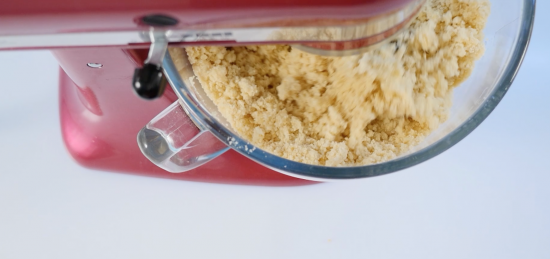
4.5 pounds (2.04 kilograms) sifted flour
15 eggs
9 yolks
3 pounds (1.36 kilograms) sugar
pinch of salt.
Mix with a dough hook using a stand mixer until it comes together to form a pastry.
Roll it out to a little more than one-sixth of an inch in thickness.
Cut a 15″ circle, 10″ circle, 6″ circle,
Make two 8″ hemispheres as shown in the video and cut a 1″ square opening at the top of the hemisphere before baking.
Roll the remaining dough into a snake 1.5″ in diameter and cut it into five columns of 3″ in length and five of 5″ in length
Bake in a moderate oven until they are a light golden brown.
Wafer with Pistachios
(Makes two trays)
450g (15.87 ounces) flaked almonds
230g (8.11 ounces) sugar
1 tablespoon flour
rind of 2 oranges
4 eggs plus 2 egg yolks
pinch of salt
112g (3.95 ounces) pistachios, roughly chopped
Preheat the oven to 180C (356 degrees Fahrenheit).
Stir the almonds, sugar, flour, oranges, egg and salt gently together. Pour onto tray lined with non-stick baking paper and using the back of a spoon spread out to make a thin rectangle. Sprinkle with pistachios and bake in the oven until just starting to go golden.
Cut into fifteen rectangles 1 1/4″ x 6″ and twenty five rectangles measuring 1 1/4″ x 5″. Separate them slightly and return to the oven to crisp up and go golden.
Cakes a la Duchesse
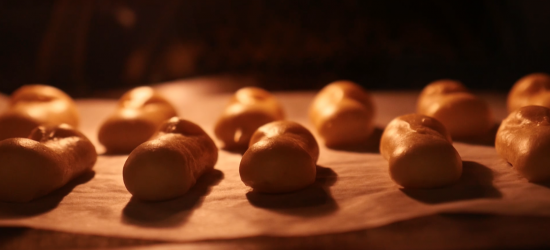
2 cups or 500mL (16.91 fluid ounces) water
2 oz (56.7 grams) of butter
170g (6 ounces) flour
4 eggs
pinch of salt
lemon zest
Preheat the oven to 200C (392 degrees Fahrenheit).
Heat the butter and water in a pan until melted. Pour in the flour and stir until thickens and forms a ball. Continue to stir over the heat for an additional 2 minutes. Remove from the heat and stir int eh eggs one at a time. Place into a piping bag and pipe 3″ long strips onto non-stick baking paper.
Bake until golden. Once cool fill with pastry cream, or the Careme’s recipe fills with jam.
Croquignoles a la reine
These were really hard, too hard to bit into so if you’re making this swap for macarons.
Meringue coating 1
6 egg whites
8 ounces (226.8 grams) of caster sugar
Pre-heat the oven to 150C (302 degrees Fahrenheit)
Whisk together the egg whites and sugar until you have stiff peaks. Put half of this mixture over each hemisphere and bake in the oven until dry.
Meringue coating 2
6 egg whites
8 ounces (226.8 grams) of caster sugar
300g (10.58 ounces) Pistachios
Pre-heat the oven to 150C (302 degrees Fahrenheit)
Whisk together the egg whites and sugar until you have stiff peaks. Pipe 30 small meringues 1′ wide and 1″ high. Sprinkle them with fine sugar and then with coarse sugar. Bake in the oven until dry.
Reserve about 1/2 a cup of this meringue mixture for later. Re-cover each hemisphere with meringue and place your pistachios with points upwards on one and downwards on the other. Make sure you leave 6 blank lines with no pistachios, this is where the meringues will go later. To get the spacing even fold a piece of baking paper in half, then into thirds. Unfold it and you should have 6 evenly spaced lines. If you put this under the hemisphere it will guide you where to leave blank spaces.
Put the hemispheres back in the oven until it dries out.
Once ready use your left over meringue mixture to attach your small meringues into the spaces. Place four in a line going down not he top half and three on the bottom half (leaving a gap at the very bottom so that it will sit flat).
Bake in the oven until it is evenly colored.
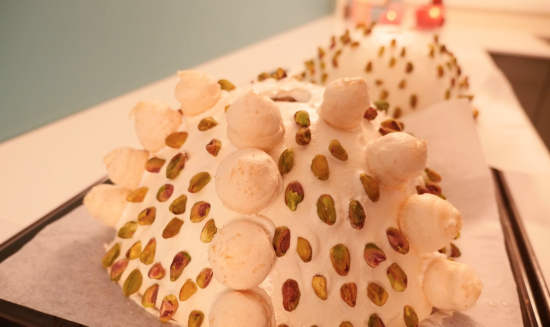
Sugar Boiled to the crack
(While one pan is probably enough keeping it warm enough to be liquid without it overcooking or crystalizing is tricky so you may need to make this more than once).
4oz (113.4 grams) sugar
1/4 cup water
Bring to the boil over the stovetop. Wash down he side of the pan using a wet pastry brush. Then leave unstirred until it starts to go golden. Turn the heat down to its lowest setting.
Dip the end of a 5″ wafer into the hot sugar and place it immediately near the edge of the 10″ circle Proceed with the remaining wafers in the same manner placing them upright close to each other so as to form a perfect circle.
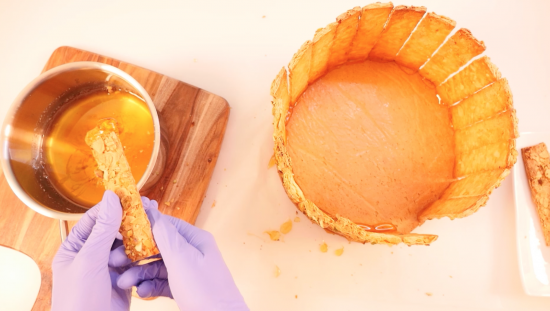
Using sugar put the 5″ columns in the centre for support.
Pouring some drops of sugar on the ends of the columns then flip the whole thing onto the 15″ circle. WARNING wear thick heavy duty silicone gloves while doing this so you don’t get burned by the hot sugar.
Repeat that with the next layer attaching the almond wafers around the 6″ circle, add the central support columns then flip it onto the top of the other one.
Next glaze the small cakes a la duchesse with hot sugar and arrange them around the base.
Using hot sugar attach four macarons inside the bottom half of the hemisphere, let them stick up a little above the rim in order to steady the second half round.
Attach the rest of the macarons in a circle around edge of the middle layer.
Using hot sugar attach the bottom half of the hemisphere to the top of the small circle.
To Serve
600ml cream
vanilla essence
1 tablespoon icing sugar
500g (17.64 ounces) strawberries, washed and hulled
Just before serving fill the bottom with whipped cream flavoured with vanilla and a little icing sugar. Pile strawberries on top.
Place the second half round on top of the first.
Apparently you are supposed to fill that with more cream through the hole in the top but I like the way it looked when it was opened – if it was full it may of gone everywhere.
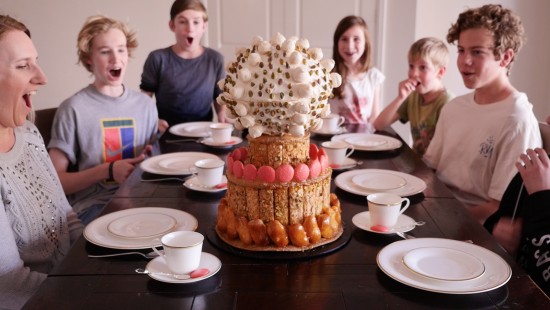
My Cookbook
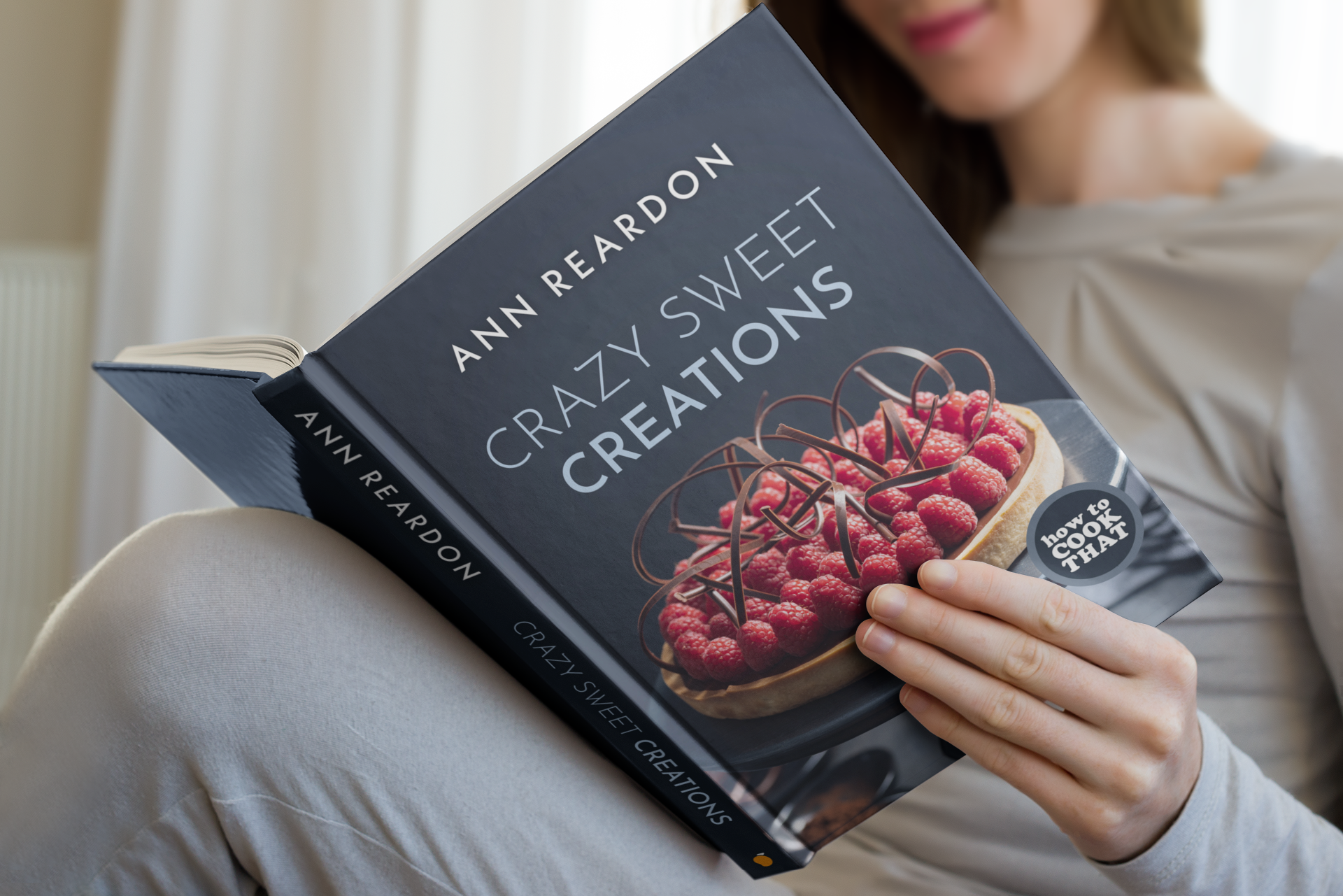 Stores that sell my book listed by country:
http://bit.ly/ARcookbook
All recipe quantities in the book are in grams, ounces and cups.
Stores that sell my book listed by country:
http://bit.ly/ARcookbook
All recipe quantities in the book are in grams, ounces and cups.



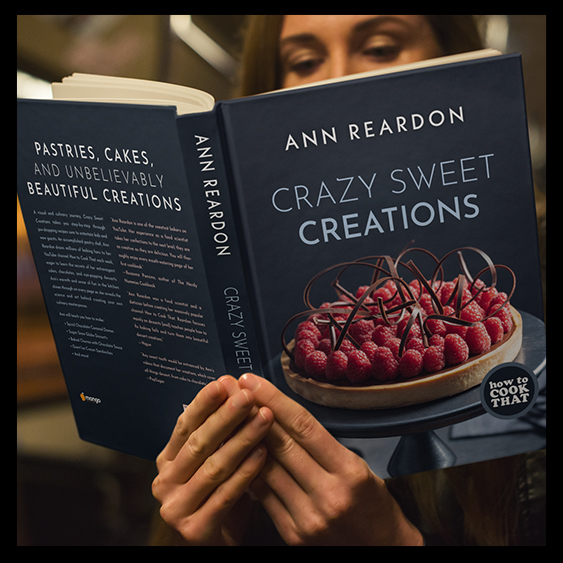





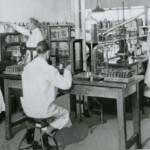
 we respect your email privacy
we respect your email privacy
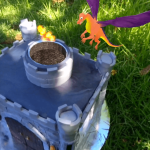
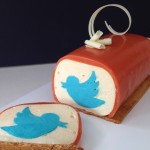

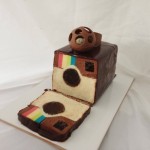
Hi! I am doing this for my school research practical task. You said we need to bake 3 lots of the almond wafers, do you mean that we need to have 3 times the ingreadients then?
Ferkle
Eggs back then were significantly smaller, who ever modernized the recipe might have not tested the egg ratio. That is probably why the egg quantities were off.
I was also wondering about the problem with the egg quantity and found an information that around 1900 the larger duck eggs were used as the normal eggs. Maybe duck eggs were also used in Napoleon’s times?
Here is a Link to the original article (sorry, in German) https://www.faz.net/aktuell/stil/essen-trinken/exotisches-essen-alternativen-zum-fruehstuecksei-14135308.html?printPagedArticle=true#pageIndex_2
Can I use oil instead of butter?
All of these recipes are separate?
So each of the different parts of the cake is a different dessert?
Hi Ann, I’m a new subscriber and I just watched this last night. I’m amazed at how involved the cooking process was back then. No wonder people who could afford it hired chefs and cooks. One thing to note though. In addition to the measurements being off also consider that the ingredients we use today are much more refined than 200 years ago. For example you used granulated sugar which is the most refined sugar we have today. 200 years ago their refined sugar would’ve been something close to our brown sugar and a little more wet. I could be wrong but I don’t think the centrifugal process for spinning molasses out of the sugar was invented yet. Anyway keep making these interesting videos and I’ll keep watching!
very true, they did have a fairly white sugar as loaf sugar – see explanation in this video https://www.howtocookthat.net/public_html/200-year-old-confectionary-recipes/
I made the wafers without the pistachios because I didn’t have any and I decided to add lemon zest as well. They turned out great.
??
Do you have times and temperatures for the baked components, or at least what you used if they’re not in the recipe? I’m not exactly sure what constitutes a “moderate oven.” Thanks.
Hi Evan, Ann gives the exact temperature for the majority of componenets in the recipes above. If it is not stated then a moderate oven is required. A moderate oven is a standard expression for an oven that is 180C for a standard oven or 160C for a fan forced. Ann prefers not to give exact cooking times as ovens and baking dishes vary so greatly. It is better to learn to look and and test your goods to see if they are cooked sufficiently. Ann gives you a colour or texture guide in the recipe. In this recipe the times will vary greatly depending on your oven because of the type of ingredients.
Thank you. I had another question about the wafer recipe; in the video she said the recipe needed to be tripled, but the ingredients listed here are only doubled what the video ingredients are. Is it meant to only be doubled? Thanks for your time.
Hi Evan, Also Ann made a double batch of the wafer recipe but found she needed to increase the quantiy and made a third batch, hence the recipe quantity.
Hy Ann, it’s absolutely fantastic cake. I loved it. Thanks for sharing
Hey Ann,
Love this cake. Maybe I could make it for my wedding. I am still at school and love history so this really is my type of cake.
Hey Ann So i watched tour vidéo and i looked for the french version but Nothing can you tell me please were did you find the english source So i can find the french one thank you So much
Hi Hiba, A lot of these old books are out of copyright and some of the big libraries have digital versions online.
Le Pâtissier Royal Parisien Volume 1
http://gallica.bnf.fr/ark:/12148/bpt6k852393j/f1.image
Confectioners Paste
(Pâte D’Office p49)
Wafers with Pistachios
(Gaufres aux Pistaches p172)
Small Cakes à la Duchesse
(Petits Pains à la Duchesse p150)
Le Pâtissier Royal Parisien Volume 2
http://gallica.bnf.fr/ark:/12148/bpt6k852237p/f1.image
Croquettes à la Parisienne
(Croquettes à la Parisienne p224)
thanks for linking to the french version Romi Z that is great
Hello 🙂 The problem is that you cannot literally translate the word “livre” by “pound” or “pouce” by “inch” in the modern sense of these words. It was notoriously difficult and challenging to maintain units of measurement accurate back then. While today a pound is about 450g is was common to see it varying from 380g all the way up to 550g back then. To make things even more complicated, the “livre” was defined differently had you been weighing coffee or flour or cereal. 1 “livre de poids” corresponded to 12 ounces of flour but 1 “livre de marc” measured 16 ounces of coffee. We also need to consider that weighing devices were also more fragile and subject to humidity and temperature influences that would further corrupt the readings. Overall we can thank the metric system, also brought to us by the french, for making recipe sharing MUCH MUCH easier nowadays !!!
Amazing cake, Ann, I’m pretty sure I would have had a meltdown less than halfway..
Had a gander at the original recipe – some things are very different, eg the 3”*3”3′ wafers that are then made into columns, as mentioned by Christophe. Although those inches are different, as pointed out by him.
Some things are fairly similar, although he does describe pate d’office a bit differently: he suggests preparing 1.5 pounds of flour, but starting with ~1.3 pounds (2 ‘litrons’, essentially impossible to figure out how much that means exactly now – there’s the reason why they switched to metric) of flour in the mixture and then potentially adding the remaining 0.2 pounds if necessary (interestingly, that bit remains in the translation ‘add afterwards the flour and another yolk if necessary’.)
It asks you to make ‘2 litrons’ of the pate d’office, but that would only be 1.3 pounds if taken literally instead of the ~5 pounds you needed, so I think that he might mean two batches here. As I said, ‘litron’ hasn’t been in use since the metric system was introduced. 😀
In general it seems that quite a bit of the original text is missing in the translation. Eg. before he gives the recipe for pate d’office, he has a few lines on it: ‘This paste plays a huge role in modern patisserie; our ancestors used to make crispy cakes with it; but today we use it to construct infinitely prettier and more elegant piece montees.’ Btw, this makes me think that while they used to eat it before his time, they stopped by the time he wrote the book and only used it for construction.
That is fascinating thanks for looking it up for me Bertie. I guess it shows if you are going to translate a cookbook you should be baking it yourself, or at least have a recipe tester.
Have checked the ingredients in the original French recipe books versus the English translation. Unlike the English translation, the French version sometimes lists the ingredients at the end or the beginning of the recipe. Had a brief look at the methods they are just as convoluted in French as they are in English! Have also provided sources:
The Royal Parisian Pastrychef
Le Pâtissier Royal Parisien Volume 1
http://gallica.bnf.fr/ark:/12148/bpt6k852393j/f1.image
Confectioners Paste p24
(Pâte D’Office p49)
Ingredients
1.5 pounds flour
1 pound of sugar
2 whole eggs
3-4 yolks
1 pinch of salt
1 extra yolk or white if required.
Wafers with Pistachios p84
(Gaufres aux Pistaches p172)
Notes
He says that most patissiers prefer to make this with egg whites but he uses whole eggs to save on eggs. It can be made with all whites as well as all yolks. Cut before getting too dry.
Ingredients
1/2 pound sliced almonds
4 ounces sugar
1/2 tablespoon (mouth spoon LOL) flour
1 orange zest
2 eggs
1 yolk
1 pinch salt
2 ounces sliced blanched pistachios
Small Cakes à la Duchesse p74
(Petits Pains à la Duchesse p150)
Ingredients
2 glasses of water
2 ounces of butter
6 ounces flour
2 eggs
2 ounces sugar
2 eggs
1 zest lemon
1-2 more eggs
1 pinch of salt
jam for filling
The Royal Parisian Pastrychef
Le Pâtissier Royal Parisien Volume 2
http://gallica.bnf.fr/ark:/12148/bpt6k852237p/f1.image
Croquettes à la Parisienne p339
(Croquettes à la Parisienne p224)
1 vanilla pod
2 ounces sugar
7 ounces sugar
8 ounces flour
4 beaten firm egg whites
Hello 🙂 The problem is that you cannot literally translate the word “livre” by “pound” or “pouce” by “inch” in the modern sense of these words. It was notoriously difficult and challenging to maintain units of measurement accurate back then. While today a pound is about 450g is was common to see it varying from 380g all the way up to 550g back then. To make things even more complicated, the “livre” was defined differently had you been weighing coffee or flour or cereal. 1 “livre de poids” corresponded to 12 ounces of flour but 1 “livre de marc” measured 16 ounces of coffee. We also need to consider that weighing devices were also more fragile and subject to humidity and temperature influences that would further corrupt the readings. Overall we can thank the metric system, also brought to us by the french, for making recipe sharing MUCH MUCH easier nowadays !!!
That looks amazing. It has so many eggs! Could you taste the eggs in the finished cake?
hi cotton tail, it tasted like meringue with strawberries, cream and profiteroles.
Hi, congratulations on making such a huge and beautiful piece.
I have looked at the original book, and measures are Parisian pouces and lignes and very different from the one you have. They are actually 3 pouces by 3 pouces and and 3 lignes for the almond and pistachio base. Almost square but he uses a cylinder to roll them as columns.
According to Wikipedia it would make 3.197 inch by 3.463 inch (us).
Feel free to ask for any other measures in the book.
Regards,
Christophe
Christophe,
What pages did you find this on in the original book? I’ve spent a half hour looking through the book and can’t for the life of me figure out where these things are.
Hi Catherine if you click on the thumbnail book pictures above they take you to the pages, with page numbers on, hope that helps.
Thanks Christophe, this is really helpful, explains why everything was so far out.